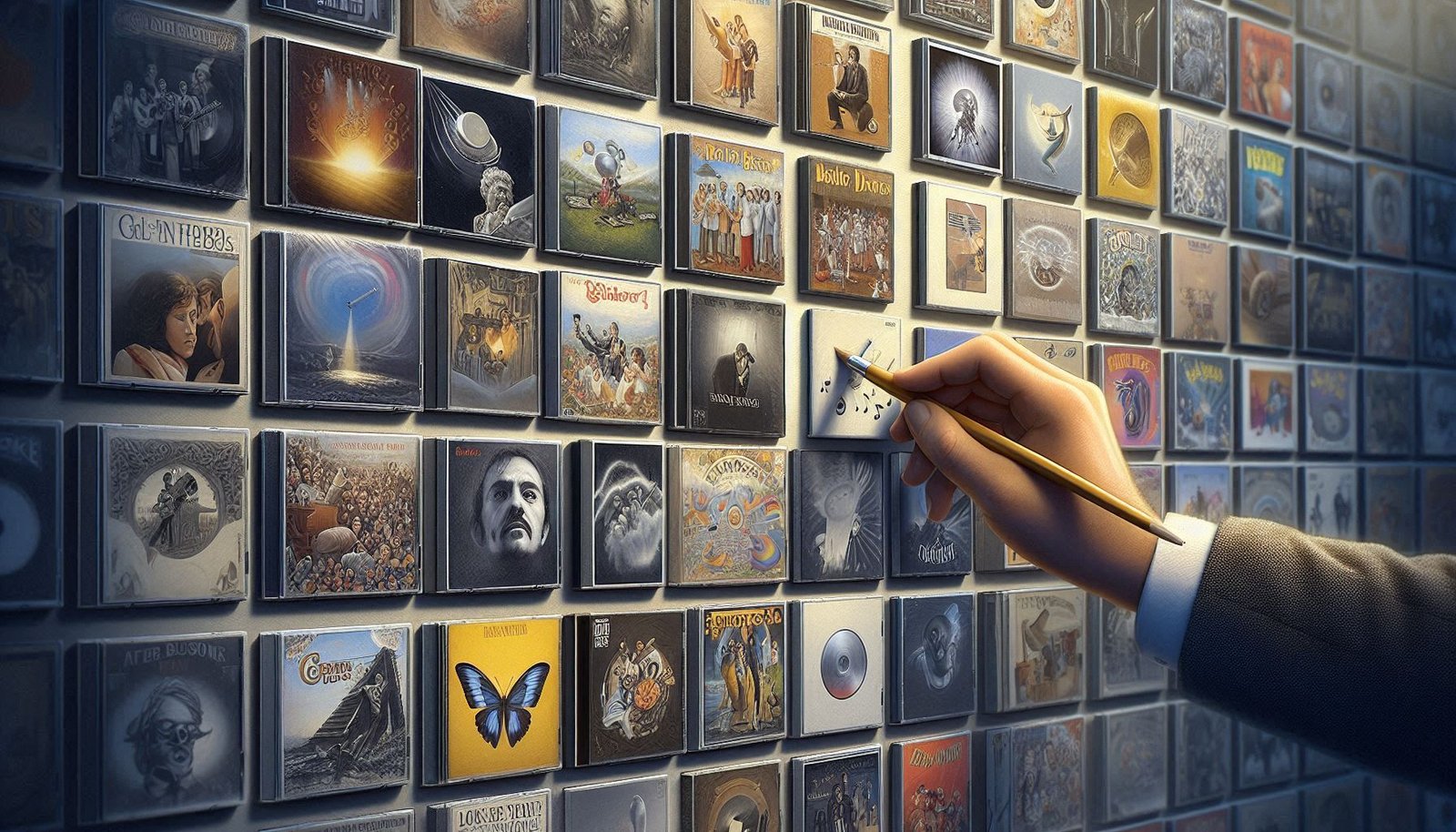
The early 1900s were an exciting period for music. It was a time of innovation, change, and cultural blending. The dawn of recorded sound and new musical forms like ragtime and early jazz shaped the soundscape of the decade. Although the concept of an “album” as we know it today didn’t exist until later, there were significant compositions, records, and performances during the 1900-1909 period that defined the music of the era. From piano rolls and wax cylinders to early phonograph records, these pioneering sounds laid the foundation for genres that would dominate the 20th century.
In this article, we’ll explore the most iconic and influential works of music from 1900 to 1909, diving into the compositions and recordings that captured the essence of the time. Whether you’re a casual listener or a devoted music enthusiast, you’ll find that these early records still resonate today. Let’s take a trip back to the turn of the century and uncover the albums (or rather, collections of music) that helped shape modern sound.
1. Scott Joplin – “Maple Leaf Rag” (1899, but influential into the 1900s)
Though technically released in 1899, Scott Joplin’s “Maple Leaf Rag” had an enormous influence on the music of the early 1900s. Joplin, often called the “King of Ragtime,” revolutionized piano music with his syncopated rhythms and intricate melodies. Ragtime was all the rage during this time, and Joplin’s masterpiece was its anthem.
Why it mattered: “Maple Leaf Rag” wasn’t just a popular tune; it was a game-changer. Ragtime blended African American musical traditions with European classical styles, creating something entirely new. Its infectious rhythm captivated listeners, and the sheet music became a massive hit, selling over a million copies—an unheard-of achievement at the time.
Legacy: “Maple Leaf Rag” laid the groundwork for jazz, one of the most significant genres of the 20th century. The syncopation in ragtime would evolve into the swing of jazz, influencing countless musicians and composers. Even today, Scott Joplin is considered one of the greatest composers of early American music.
2. Enrico Caruso – “Vesti la giubba” (1902)
Opera was one of the most popular forms of music in the early 1900s, and Enrico Caruso was its biggest star. His 1902 recording of “Vesti la giubba” from Ruggero Leoncavallo’s opera Pagliacci became one of the first million-selling records. Caruso’s voice, full of emotion and power, helped bring opera to the masses during this era.
Why it mattered: Caruso’s success as a recording artist wasn’t just about the music—it was about the new medium of sound recording itself. His recordings proved that classical music, which had been a primarily live experience, could be captured and sold to a broad audience. Caruso’s records marked the birth of recorded music as an industry.
Legacy: Enrico Caruso’s influence extended far beyond opera. He was the first global music superstar, and his recordings set the standard for what vocal performance on record could be. His success helped pave the way for recorded music as a commercial product, which would eventually lead to the dominance of popular music records in the 20th century.
3. John Philip Sousa – “Stars and Stripes Forever” (1900)
Few pieces of music are as instantly recognizable as John Philip Sousa’s “Stars and Stripes Forever.” Composed in 1896 and recorded in 1900, this military march quickly became the unofficial anthem of the United States. Sousa, often called the “March King,” was one of the most prolific composers of his time, and “Stars and Stripes Forever” was his most famous work.
Why it mattered: Sousa’s marches were a reflection of American nationalism during a time of growing patriotism. His compositions were performed by bands across the country, and the popularity of “Stars and Stripes Forever” cemented his status as one of America’s leading composers.
Legacy: “Stars and Stripes Forever” remains a staple of American patriotic celebrations, particularly on Independence Day. Sousa’s marches also influenced the development of early jazz and big band music, with many of his compositions being adapted by later musicians. His legacy lives on in military and marching bands around the world.
4. Claude Debussy – La Mer (1905)
While America was embracing ragtime and marches, Europe was experiencing a musical revolution of its own. Claude Debussy’s La Mer, a groundbreaking orchestral composition released in 1905, showcased the birth of musical modernism. With its rich, impressionistic textures, La Mer broke free from traditional classical music structures and explored new, evocative soundscapes inspired by the sea.
Why it mattered: La Mer was a departure from the rigid structures of the Romantic era. Debussy’s use of unconventional scales, harmonies, and textures opened the door for composers to experiment with sound in new ways. His music reflected the changing artistic movements of the time, like Impressionism, and helped usher in the 20th-century modernist movement.
Legacy: La Mer influenced a generation of composers, from Maurice Ravel to Igor Stravinsky. It also had a lasting impact on film music, with its sweeping, atmospheric qualities becoming a template for cinematic scores. Debussy’s exploration of tone and texture continues to resonate with musicians and composers today.
5. Blind Willie Johnson – “John the Revelator” (1900s)
The early 1900s were a pivotal time for the development of American blues and gospel music. Blind Willie Johnson, an iconic gospel blues singer and guitarist, recorded “John the Revelator” in the 1900s. His gritty voice and raw guitar playing style captured the emotional depth of religious music in a way that resonated deeply with listeners.
Why it mattered: Johnson’s music combined the spiritual power of gospel with the emotional intensity of the blues. His songs were steeped in religious themes, yet his delivery was full of raw emotion that transcended genre boundaries. “John the Revelator” became a significant influence on gospel, blues, and even rock musicians in the decades to come.
Legacy: Blind Willie Johnson’s impact on American music cannot be overstated. His songs have been covered by artists from Bob Dylan to The White Stripes, and his influence can be heard in the gospel and blues traditions that form the backbone of much modern music. He laid the groundwork for future blues legends like Robert Johnson and Son House.
6. Gustav Mahler – Symphony No. 5 (1904)
Gustav Mahler’s Symphony No. 5, completed in 1902 and first performed in 1904, was a monumental work that reflected the emotional and intellectual depth of classical music in the early 20th century. The symphony’s famous Adagietto movement is one of Mahler’s most well-known compositions, and it continues to be revered for its haunting beauty.
Why it mattered: Mahler’s symphonies were massive, both in scale and in ambition. His music bridged the gap between the Romantic and Modernist periods, offering a complex, emotionally charged sound that challenged both musicians and listeners. Symphony No. 5 was a turning point for Mahler, representing a shift toward a more introspective and personal style of composition.
Legacy: Mahler’s influence can be heard in the works of composers like Arnold Schoenberg and Benjamin Britten, as well as in modern film scores. His symphonies, particularly the Fifth, remain central to the classical music canon and are performed regularly by orchestras around the world.
7. Jelly Roll Morton – “King Porter Stomp” (1906)
Jelly Roll Morton is often credited with being one of the first true jazz composers, and his piece “King Porter Stomp,” first recorded in 1906, helped define the early sound of jazz. Morton blended ragtime with blues and other African American musical traditions to create a vibrant, energetic new form of music.
Why it mattered: “King Porter Stomp” is a cornerstone of early jazz, a genre that would come to dominate the American music scene in the 1920s. Morton’s ability to fuse different musical styles into a cohesive, exciting whole was a major innovation, and his influence on jazz is immeasurable.
Legacy: Jazz legends like Louis Armstrong and Duke Ellington cited Morton as a significant influence, and “King Porter Stomp” became a standard in the jazz repertoire. The song was covered and reinterpreted by countless jazz bands, helping to shape the sound of swing music in the 1930s and 1940s.
8. Richard Strauss – Salome (1905)
When Richard Strauss premiered his opera Salome in 1905, it caused a sensation. Based on the play by Oscar Wilde, the opera’s shocking themes and innovative use of musical language pushed the boundaries of what was acceptable in the classical music world. Salome was modern, bold, and a glimpse into the avant-garde movement that would follow.
Why it mattered: Salome was a radical departure from traditional opera. Strauss’s daring use of dissonance, chromaticism, and orchestration was ahead of its time and laid the groundwork for the musical experimentation of the 20th century. The opera’s controversial subject matter also challenged societal norms, making it a lightning rod for both praise and criticism.
Legacy: Strauss’s Salome was a precursor to the atonal music of composers like Arnold Schoenberg. Its influence can be seen in modern operatic works, as well as in film scores that push musical boundaries. Salome remains a fixture in the opera repertoire, performed by companies worldwide.
9. Edward Elgar – Enigma Variations (1899, but influential into the 1900s)
Another work that predates the 1900s but had a significant impact throughout the decade is Edward Elgar’s Enigma Variations. First performed in 1899, this orchestral suite is one of the most beloved and frequently performed pieces of English classical music. The Nimrod variation, in particular, became a symbol of British patriotism and emotional expression.
Why it mattered: Elgar’s Enigma Variations bridged the gap between the Romantic and modern eras of classical music. Its combination of lush orchestration and emotional depth made it a favorite of both audiences and performers.
Legacy: Elgar’s influence extended far beyond the UK, with his works being performed worldwide. Nimrod remains a favorite at solemn occasions, while the Enigma Variations as a whole continue to be regarded as one of the greatest achievements in orchestral music.
Conclusion: A Decade of Musical Innovation
The 1900s were a transformative time for music, with composers, musicians, and performers breaking new ground in both popular and classical genres. From the syncopated rhythms of ragtime to the emotional power of opera and symphonic works, the early 20th century was full of rich, innovative music that continues to inspire and influence today’s artists.
As we look back at these pioneering works, it’s clear that the seeds of modern music were planted during this decade. Whether through early recordings that captured the magic of live performance or through groundbreaking compositions that pushed the boundaries of what music could be, the sounds of the 1900s have left an indelible mark on music history.


